|
The different types of features that decorate the cave are collectively called cave formations or speleothems. Most of the speleothems in the cave form by similar processes. The water passes downward through the soil above the limestone, absorbs carbon dioxide, and becomes acidic. As a weak acid, the water is able to dissolve a small amount of the limestone rock as it passes through cracks and pores on its journey down into the cave. As this water drips into the air-filled cave, dissolved carbon dioxide is given off. Because the water has lost carbon dioxide, it cannot hold as much dissolved calcium. The excess calcium is then precipitated onto the cave walls and ceilings to make up many of the different kinds of formations. Most calcium is precipitated in the cave as the mineral calcite (CaCO3). The speloeothem that Wind Cave is most famous for is boxwork. There are many other formations such as popcorn, frostwork, dogtooth spar crystals, and flowstone that may be seen along the tour routes. Other speleothems that can be seen in the cave, but not on the tour route, are: helictite bushes, calcite rafts, and gypsum features. Below are pictures of some of the more common decorations (speleothems) of Wind Cave. 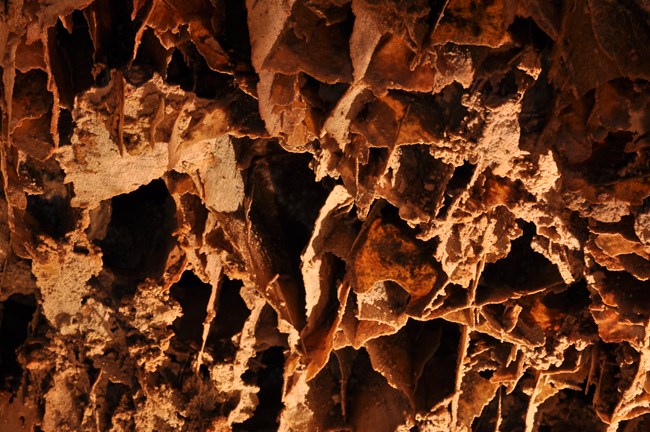
NPS Photo BoxworkBoxwork is what makes Wind Cave so unique. Rarely found elsewhere in the world, boxwork hangs from the ceiling and lines many of the walls of the cave. Learn more about the unique formation of this speleothem here.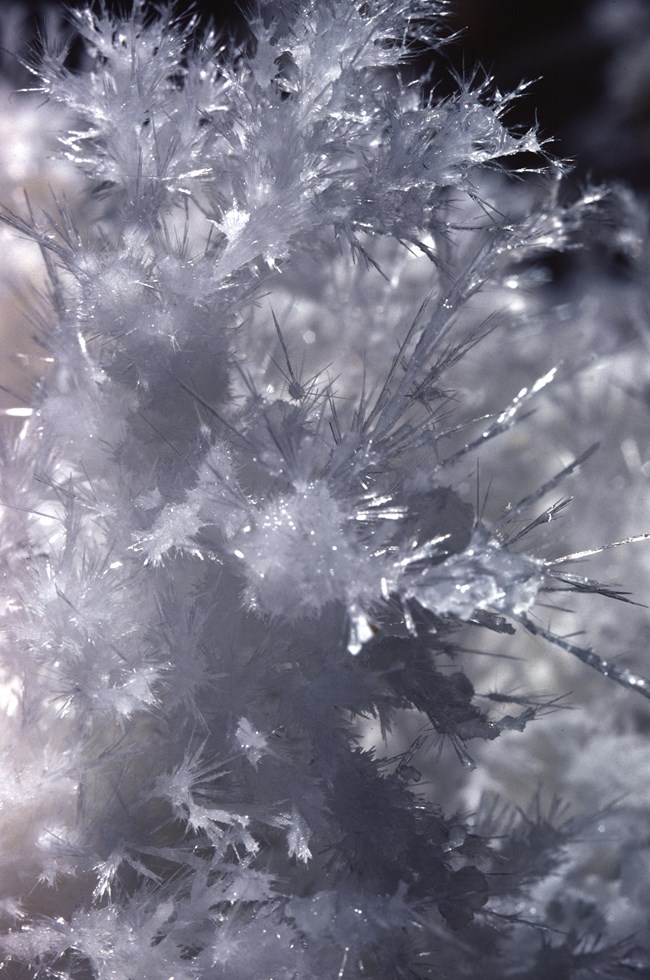
NPS Photo FrostworkDelicate needle-like growths of calcite or a related mineral, aragonite, are called frostwork. In places the frostwork may grow on top of cave popcorn or boxwork. The origin of frostwork is controversial. In Wind Cave, it seems to concentrate in passages with above average airflow where, it is thought, evaporation plays a role in its formation. 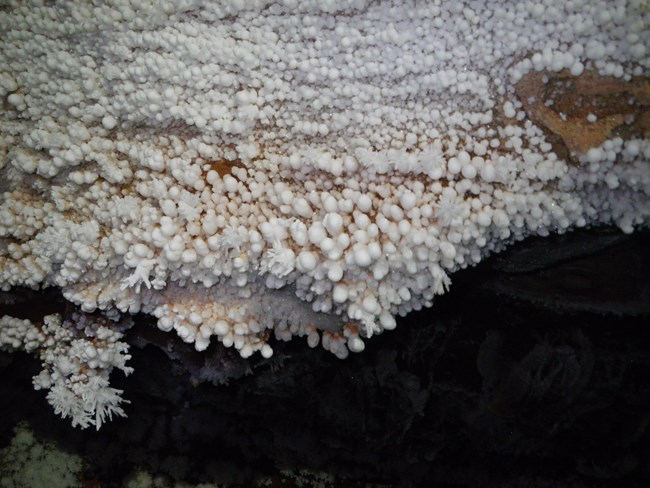
NPS Photo Cave PopcornSmall, knobby growths of calcite on the cave walls are called cave popcorn. Popcorn commonly forms in one of two ways in the cave: where water seeps uniformly out of the limestone wall and precipitates calcite; or, when water drips from the walls or ceilings of the cave and the water splashes on the floor or on ledges along the walls. This splashing action causes loss of carbon dioxide and the subsequent precipitation of calcite. 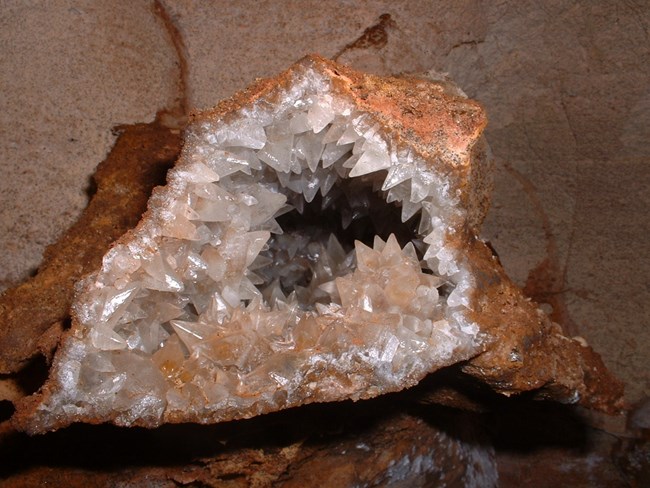
NPS Photo Dogtooth SparSpear-shaped crystals of calcite called dogtooth spar frequently line small pockets in the limestone rock. These crystals are a prominent feature of other caves in the Black Hills, most notably, Jewel Cave of Jewel Cave National Monument. 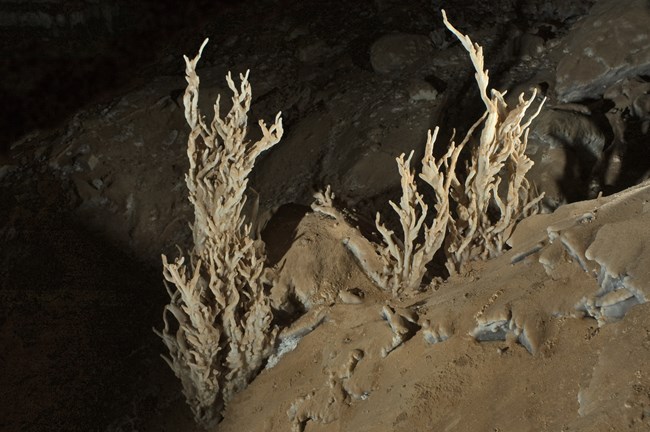
NPS Photo Helictite BushesCertainly one of the most curious formations in Wind Cave are helictite bushes. While small helictites are found in many caves, the helictite bushes are large, bush-like growths of calcite that branch and twist like gnarled trees. The largest helictite bush in the cave is about 6 feet (2 meters) tall. The helictite bushes usually grow from the floor of the cave. The helictites may form when water seeps into the cave through pores so small that the flow is controlled by capillary action and not by gravity. This allows water to move uphill and deposit calcite against the force of gravity. It is also thought the bushes may have formed underwater when the water rising from below mixed with cave waters of a different chemistry. 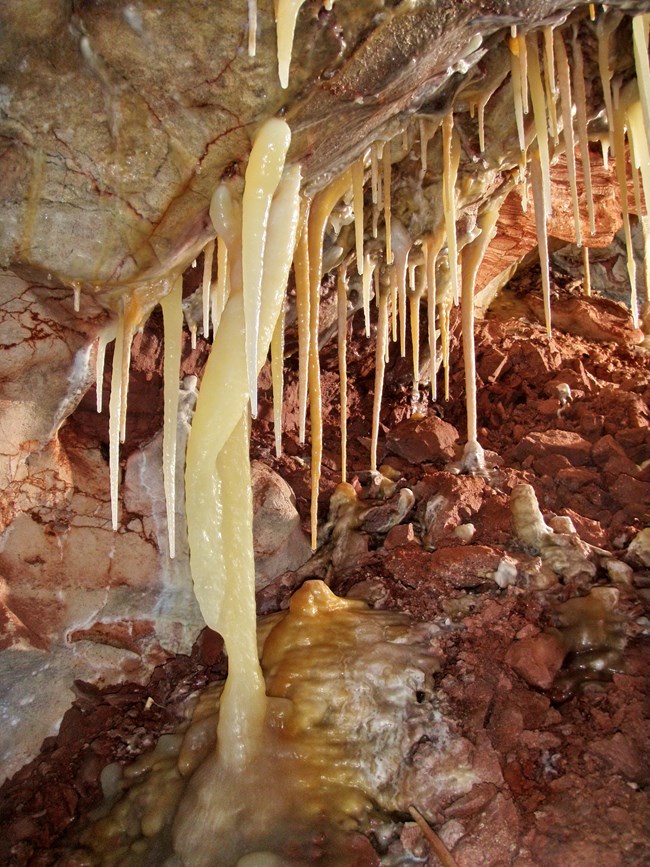
NPS Photo Flowstone/DripstoneWhere the deposition of calcite is concentrated along cracks, calcite is deposited as flowstone, or dripstone. Dripstone includes such features as stalactites and stalagmites, speleothems common in many limestone caves but relatively rare at Wind Cave. The comparative scarcity of these features in Wind Cave is another puzzle for geologists. Perhaps a lack of water would explain it. Alternately, the difference may be the way the water passes through the rock. Rather than just flowing along cracks, much of the water which enters Wind Cave today passes more-or-less uniformly through the rock by seeping between pore spaces. Consequently, when the water reaches the cave it coats the cave walls with a frosting-like layer of calcite rather than concentrating the calcite only along cracks. 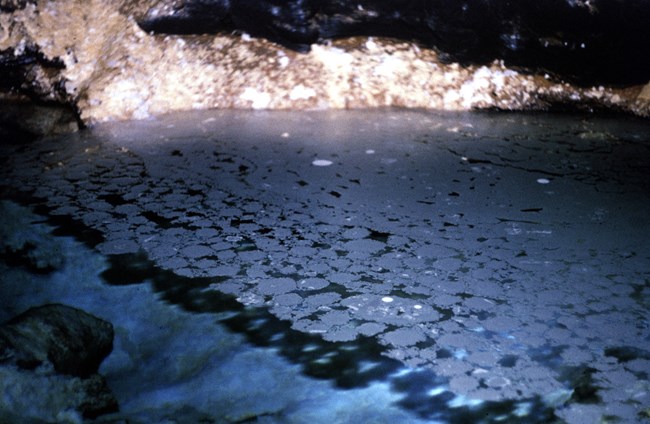
NPS Photo Calcite RaftsCalcite rafts are thin sheets of calcite that today are precipitating and floating on the surface of Calcite Lake in the deepest part of the cave. The thin rafts float on the surface due to surface tension before eventually sinking when they become too heavy or when the pool is disturbed. Calcite rafts which litter the floor of some dry areas of the cave are evidence that these passages were once flooded too. 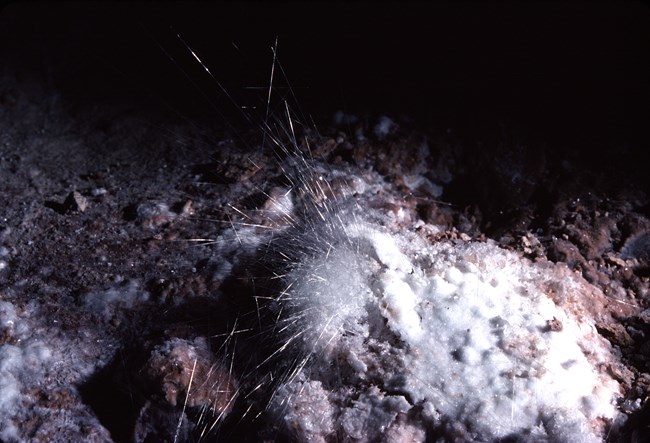
NPS Photo Gypsum FeaturesGypsum crystals are common in some of the dryer parts of the cave. Gypsum, a mineral containing both calcium and sulfur, sometimes takes the form of needle-like crystals that radiate from clusters on the floor of the cave; in other cases, gypsum resembles puffs of cotton, or forms clusters of curved or coiled crystals called gypsum flowers. |
Last updated: July 4, 2023
